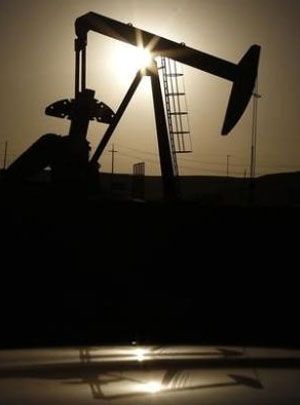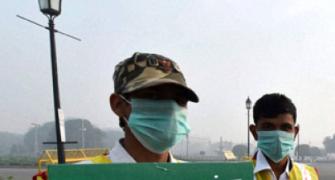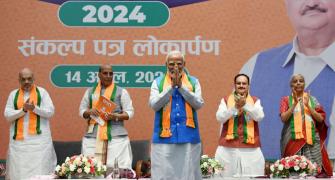 OPEC’s move to cut output has pushed up oil prices. From here it could go either way: oil could reach $100/barrel or an analysis of demand and supply might follow, say Abheek Barua & Bidisha Ganguly.
OPEC’s move to cut output has pushed up oil prices. From here it could go either way: oil could reach $100/barrel or an analysis of demand and supply might follow, say Abheek Barua & Bidisha Ganguly.

Oil prices have increased by about 12 per cent since the oil producer’s cartel, OPEC somewhat unexpectedly agreed to cut output at an informal meeting in Algiers on September 28.
The reduction is not massive - the agreement is to limit the volume of oil pumped from the current rate of 33.24 million barrels a day to 32.5-33 million barrels.
Thus the increase in prices does not reflect a likely shift in the demand-supply balance in oil but instead captures investors’ surprise at the fact that the 14 members of the cartel could actually agree to jettison the “pump at will” policy they have followed since 2014.
It also implicitly signals a rapprochement in Saudi-Iran relations. That’s certainly good news not just for the oil market but for political stability of the Middle East and North Africa region, too.
Could this mean that we could see a return to the days when prices close to $100 a barrel was par for the course? We believe that if the demand-supply balance remains broadly unchanged as the majority of oil analysts seem to predict, oil prices could top out soon. The euphoria of the deal could give way to a cold analysis of the appetite for oil and its production.
For one thing Iran, Libya and Nigeria have been exempted from the deal. As some of their oilfields that were sidelined for the last few years due to sanctions and violent conflict start supplying again, other members might resent having to cut supplies further to accommodate.
OPEC has a long history of non-compliance by members to supply agreements. The incentive to renege is much stronger now than in the past because most producers are desperately cash-strapped.
Iraq for instance has been particularly reluctant. Operations have just started in the massive oil-field at Kirkuk in the north of the country and the Iraqi government has a severe fiscal problem.
Soon after the deal was announced, Iraqi officials went on record saying that it does not trust the OPEC’s oil-production numbers which underreport Iraq’s actual output. Relying just on the data, Iraq alleged, could lead to it getting a smaller share of the group’s production.
Then there are the non-OPEC producers. A massive new oilfield in Kazakhstan is due to start pumping soon and would entail a pretty large increase in supply.
The biggest oil producer, Russia, along with smaller suppliers such as Mexico and Norway, has actually put more out on the market in 2016 than forecast earlier. For them production has been resilient to prices again reflecting their need for quick cash. This is unlikely to change.
Finally, the prospect of shale oil extractors returning to the market remains. The thumb rule seems to be that at $50 a barrel, shale oil becomes viable. However, there is some evidence that these operations have become leaner and thus the threshold price for them to get back in the black is perhaps lower.
The other side of the equation doesn’t look too heartening either. To quote the International Energy Agency (IEA), “global oil demand growth is slowing at a faster pace than initially predicted”. It reduced its forecast for global oil demand for 2017 to 97.3 million barrels per day (mbpd) - an annual gain of 1.2 mbpd, lower than a 1.3 mbpd gain in 2016.
China’s Strategic Petroleum Reserve (SPR) is close to full capacity and the likely reduction in demand from China’s small independent “teapot refiners” (demand from them accounts for 1.4 mbpd) will not help either.
Of course, there is the argument that oil is like a financial asset being traded every minute on exchanges and the fundamental demand-supply balance does not matter.
But even if one were to go by this, forces seem to be pitted against a rise in prices. Major central banks like the Bank of Japan and the European Central Bank seem to be keen on winding down their easy money policy while the US Federal Reserve looks all set to hike its policy rate. Could renewed unity among the OPEC counter all these challenges? Watch this space.
Photograph: Lucy Nicholson/Reuters
Abheek Barua is chief economist, HDFC Bank. Bidisha Ganguly is chief economist, CII










